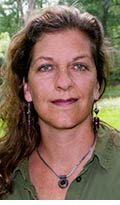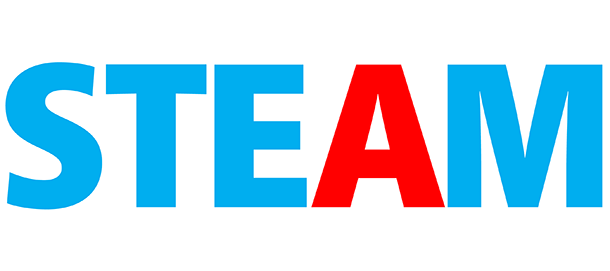NSF network building momentum to blend art and science learning

Carol LaFayette
The world’s economy, culture and learning environments are being transformed by products and ideas, such as computer hardware and software, which are fundamentally cross-disciplinary in nature, combining technical expertise, "science," with a design aesthetic, "art."
Though traditionally poised at opposing ends of the academic continuum, art and science are sharing the limelight in a [National Science Foundation] (http://www.nsf.gov/) -funded educational initiative aimed at elevating the role of art in science and vice versa.
The national [Network for Sciences, Engineering, Arts & Design] (http://sead.viz.tamu.edu) (SEAD), headed by Carol LaFayette, associate professor of visualization at Texas A&M, is advancing the [STEM to STEAM] (http://stemtosteam.org/) movement — adding art and design components, the "A," to science, technology, engineering and mathematics (STEM) teaching and learning.
Since established, SEAD has pursued an active research and outreach agenda, developing strategies and hosting workshops that champion the integration of art and design in technical education.
LaFayette and other leading STEM to STEAM champions joined STEM advocates at a Jan. 25, 2013 [Teacher Summit] (http://stemsummit.tamu.edu/) hosted by the Texas A&M colleges of engineering and science at the College Station Hilton. The event provided high school teachers and guidance counselors with hands-on activities demonstrating innovative, relevant, classroom-ready STEM projects.
The development of STEAM curricula for grades K-12 will be the focus of a March 9-10 creativity [workshop] (http://one.arch.tamu.edu/news/2013/2/1/texas-creativity-workshop/) hosted by Texas A&M’s [Institute for Applied Creativity] (http://creativity.tamu.edu) , directed by LaFayette, in partnership with SEAD and Texas STEM to STEAM advocates known as the PIE (Play, Invent and Explore) group.
Too stark a distinction is drawn between science and the arts, said STEM to STEAM movement champion John Maeda, president of the Rhode Island School of Design, who believes scientists need art and artists in their professional lives to invent and innovate successfully.
“We seem to forget that innovation doesn't just come from equations or new kinds of chemicals,” Maeda told the Guardian, a British national newspaper.
Innovation in the sciences, he said, is always linked in some way, either directly or indirectly, to a human experience. And human experiences, he said, happen through engaging with the arts, whether listening to music or experiencing a work of art.
The STEM to STEAM initiative is drawing worldwide attention, said LaFayette.
“Since its inception, the Network for Sciences, Engineering, Arts and Design has gained an international groundswell of interest and enthusiastic support for creative, innovative research and practice through exchanges across traditional boundaries,” she said. “Everyone wants to learn more about this phenomenon and how it can be nurtured. Contributors include educators, researchers, artists, scientists, engineers, designers, entrepreneurs, and many others.”
SEAD’s learning and education objectives include:
- Formalizing a rich national and international network of arts/science colleagues in higher education, K-12 formal education, informal education, and the do-it-yourself Maker Movement ;
- Articulating the impact of cross-disciplinary skills on culture, innovation, and economic development;
- Researching best practices nationally and developing usable and testable lessons and models, and
- Integrating formal evaluation into planning, research, and development of future plans.
LaFayette said SEAD members are researching case studies of STEAM learning experiences in K-12, higher education, as well as DIY/maker communities across the U.S. SEAD’s next steps, she said, involve a series of more STEAM planning workshops focusing on research, delivery and evaluation.
On March 13-14, the SEAD Research and Creative Working Group will meet at Texas A&M to review results of an international open call for [white papers] (http://seadnetwork.wordpress.com/white-paper-abstracts/final-white-papers/) proposing future SEAD initiatives.
“The call garnered more than 150 abstracts and 50 final papers from 24 countries,” said LaFayette.
At a series of meetings held November 2012 in Washington, D.C., SEAD leaders met with the NSF and other national organizations interested in learning more about the STEAM movement, including the Smithsonian Museum of Natural History, the Center for Advancement of Informal Science Education, and the National Museum of Women in the Arts.
The SEAD group at the Washington, D.C. gatherings included representatives from the NSF, the National Education Association, the Institute where Creativity Empowers Success, Rhode Island School of Design, Parsons The New School for Design and the National Academies Board on Science Education.
May 16, SEAD members will gather again in Washington, D.C to compare notes and discuss initiatives based on what they have learned to date. The workshop will be held in conjunction with the [D.C. Art Science Evening Rendezvous] (http://www.cpnas.org/events/daser-021412.html) , a monthly forum about projects combining art and science hosted by the National Academy of Sciences.
SEAD’s partners include the National Science Foundation, National Endowment for the Arts, National Academies of Science/National Research Council, UT Dallas, Texas A&M University, Center for Design Innovation at University of North Carolina, Leonardo/The International Society for the Arts, Sciences and Technology, Rhode Island School of Design, Parsons New School for Design, University of California San Diego, MIT Media Lab, Southern Methodist University, Rice University, Bug Labs New York, Smithsonian Natural History Museum, National Museum of Women in the Arts, Explora Museum, California Academy of Sciences, Iridescent Science Studios, Oklahoma Museum Network, Texas PIE Project and ICEE Success.
Tags
- academics
- applied creativity
- architecture
- art
- building a better texas
- feature
- interdisciplinary
- outreach
- partnerships
- research
- rss
- technology
- visualization
Related Posts

Initiative fusing arts, technology education gains momentum

Texas A&M researchers enabling buildings to ‘breathe’
New director shares vision for Institute for Applied Creativity
Follow Us
Facebook Twitter Vimeo Youtube Flickr RSS
Recent Posts

Planning prof heads study of disaster housing aid

A message from the dean

Former student remembered as expert planner

Leading educator named new head of Architecture Dept.






_thumbnail_small.png)
